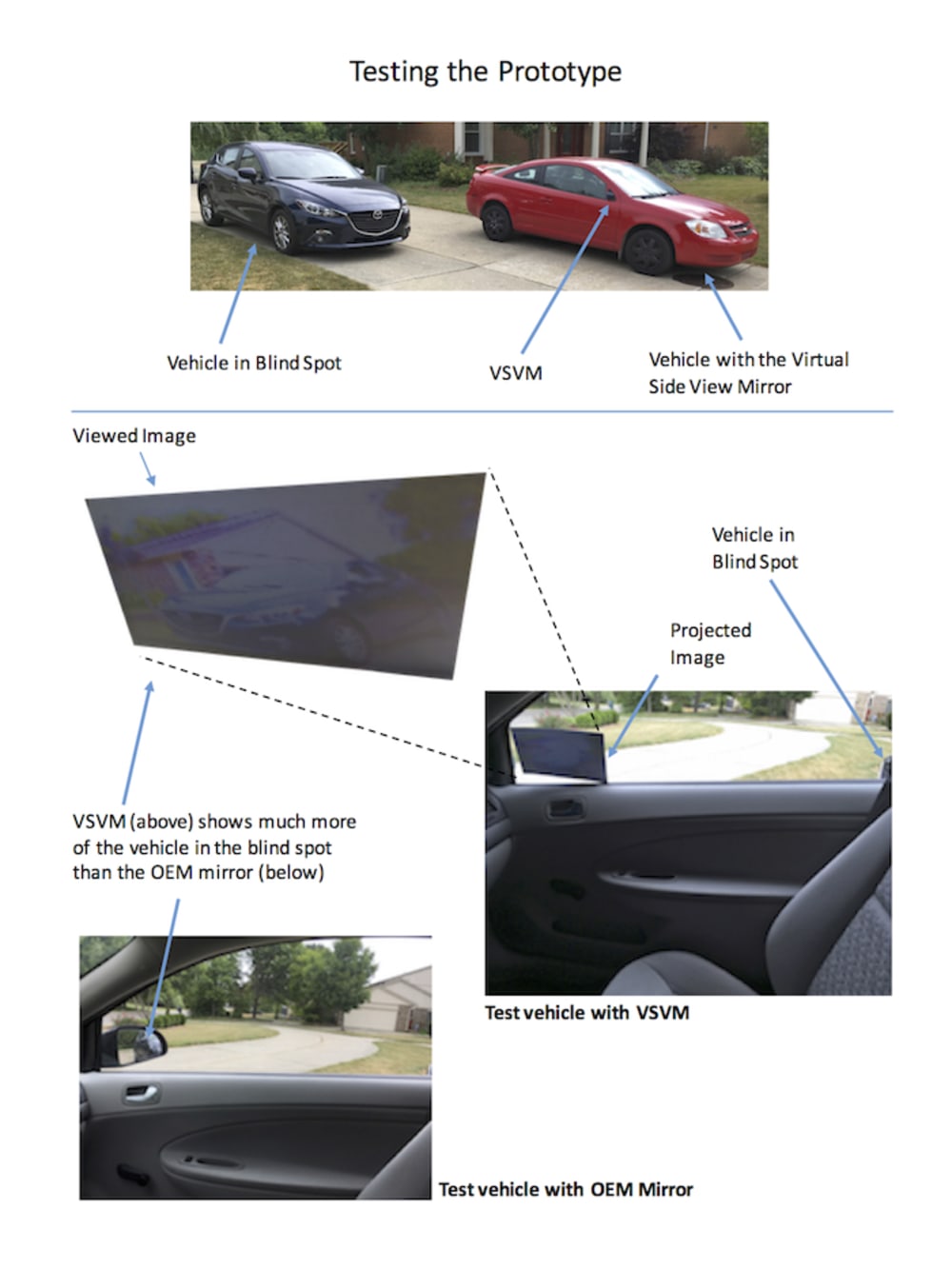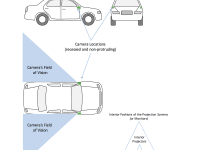An automotive Virtual Side View Mirror (VSVM), which uses a closed-circuit video system to generate images of the sides of a vehicle and present the images to the driver in a manner to improve traffic “situational awareness.” Benefits include: improved safety, reduced noise/vibration, reduced fuel consumption, and increased styling freedom.
The automotive side view mirror is a safety device and legally required. Current technology uses mirrors positioned in housings outside of the vehicle, close to the A-pillar. This design philosophy presents the following deficiencies:
• Blind Spots – Limited lateral visibility; a safety concern.
• Poor Night Vision – Poor visibility under limited lighting conditions; a safety concern.
• Noise/Vibration – Unsteady aerodynamic fluctuations generate unsteady forces, leading to noise and vibration; undesirable.
• Blurred Image – Aforementioned vibration can lead to unsteady images at higher speeds; a safety concern.
• Fuel Consumption – Increased drag coefficient; increased fuel consumption.
• Styling - Interference with automotive styling freedom; undesirable.
• Hazard – Probability of striking objects/persons; repair costs and pedestrian injuries.
VSVM replaces the bulky side view mirrors with an unobtrusive camera system, addressing all the above deficiencies.
Closed-circuit video systems have been used to replace mirrors in vehicles, but the previous attempts were not successful, as they placed the images on dashboards, thus the driver could not perceive adequate “situational awareness”, i.e., the knowledge and perception of what is next to the vehicle. The key innovation here is positioning the desired images in the line of sight from the drivers’ eyes to the location of the OEM mirrors, and digitally enhancing the images.
As shown in the illustrations, VSVM comprises of a non-protruding rear-pointing video camera outside of the vehicle close to the A-pillar, which captures the entire side view of the vehicle. A video processor and software process the image, compensate for optical aberrations, improve night vision, and provide the resulting image close to the A-pillar inside the vehicle. The image may be projected onto a flat screen or displayed via a flat screen monitor in the vehicle interior with day/night brightness levels. Additional information such as GPS, distances, and visual alerts may be superimposed on the displayed image.
With VSVM, the drivers would look in the same directions as they do now, and see the images at the locations they expect to see them, along with digital enhancements and additional content. Thus, VSVM promotes “situational awareness”.
VSVM leverages only existing technologies, but is configured in a novel fashion to provide improvements and new utilities. A functional prototype has been successfully developed using an inexpensive camera, video projector, 3D printed housing, and a simple projection screen. In production, the cameras, video units, projectors, and the display units are aesthetically integrated within the vehicle design.
The cost of the proposed system is approximately $500, which is offset by the following benefits:
• Elimination of the blind spots, improved night vision, and improved safety
• Elimination of noise/vibration
• Reduction in fuel consumption
• Increased styling freedom
Like this entry?
-
About the Entrant
- Name:Kas Kasravi
- Type of entry:individual
- Patent status:pending








